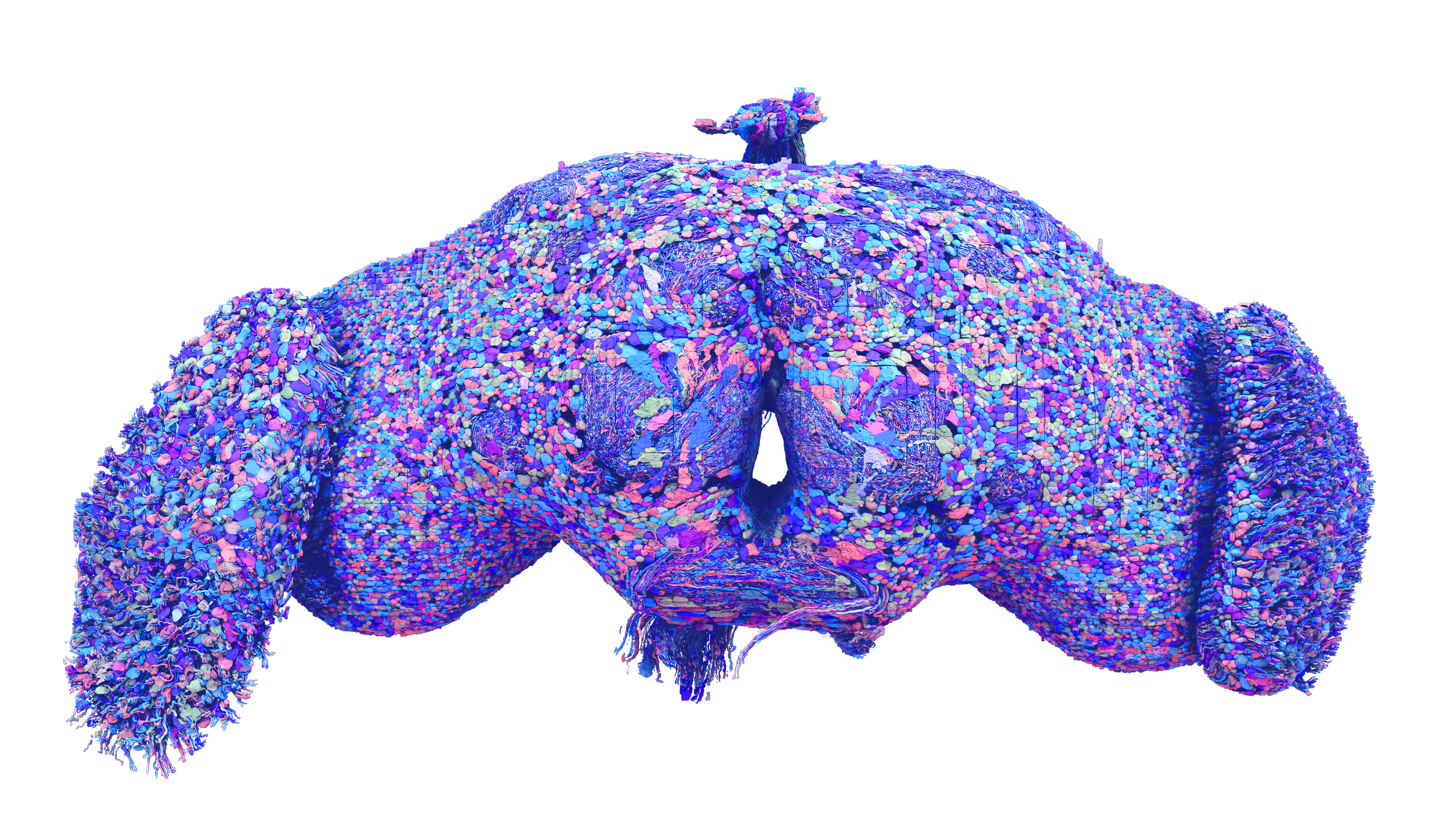NIH-supported milestone will advance understanding of brain processes in larger animals
• Press Release
A scientific team supported by the National Institutes of Health (NIH) unveiled the first complete map of the neural connections of the common fruit fly brain. The map provides a wiring diagram, known as a connectome, and is the largest and most complete connectome of an adult animal ever created. This work offers critical information about how brains are wired and the signals that underlie healthy brain functions. The study, which details over 50 million connections between more than 130,000 neurons, appears as part of a package of nine papers in the journal Nature.
“The diminutive fruit fly is surprisingly sophisticated and has long served as a powerful model for understanding the biological underpinnings of behavior,” said John Ngai, Ph.D. , director of NIH’s Brain Research Through Advancing Innovative Neurotechnologies Initiative® , or The BRAIN Initiative® . “This milestone not only provides researchers a new set of tools for understanding how the circuits in the brain drive behavior, but importantly serves as a forerunner to ongoing BRAIN-funded efforts to map the connections of larger mammalian and human brains.”

The connectome map details the full set of cell classes in the fruit fly brain, identifying different types of neurons and chemical connections, or synapses, between neurons. It also provides insight into the type of neurotransmitter (chemicals such as dopamine or serotonin) secreted by each neuron.
The researchers also created a map of projections between brain regions, known as a projectome, that tracks the organization of the hemispheres and behavioral circuits within the fly brain. It allows for the detailed mapping of specific brain circuits that control behavior, such as the ocellar brain circuit, which takes in visual stimuli and outputs behavioral changes that orient the fly’s body during flight.
In a companion paper, the researchers provided an annotation of the fly connectome, detailing cell types, cell classes, and more. It includes information critical for researchers and others who will use the connectome to advance our understanding of brain physiology and behavior.
The fruit fly is capable of surprisingly advanced cognition and behavior, making it an ideal candidate for this initial connectome project. For example, they can form long-term memories, engage in social interactions, and navigate over large distances. Now that the fruit fly connectome has been established, the same methodology could be used to rapidly create similar maps in larger-brained animals. For example, the new map may serve as a reference to understand how a host of human mutations affect brain connections.
To create the fly connectome, researchers took electron microscope images of the complete fly brain that had been publicly released and used a computer program to automatically identify or “segment” the neurons in the images. The program is not foolproof, so the researchers created a computational system of tools that allowed a large online research community to look at the segments, proofread them for accuracy, and annotate cell types and classes in a community-driven manner. Proofreading of the identification and delineation of the individual neurons was completed by a consortium of fruit fly labs, called FlyWire, which included scientists from around the world.
“In 2021, only 15% of the neurons had been proofread,” said Shelli Avenevoli, Ph.D., acting director of NIH’s National Institute of Mental Health. “Opening proofreading to the larger scientific community studying the fruit fly brain greatly accelerated how fast we were able to complete this connectome.”
Data analysis tools for the full fruit fly connectome can be found at https://codex.flywire.ai/ . Researchers can interact with the connectome data at https://fafb-flywire.catmaid.org/ . The study was supported by NIH’s The BRAIN Initiative, a multidisciplinary collaboration across 10 NIH institutes and centers that is enabling researchers to understand the brain at unprecedented levels of detail in both health and disease, improving how we treat, prevent, and cure brain disorders.
The Brain Research Through Advancing Innovative Neurotechologies® Initiative and The BRAIN Initiative® are registered trademarks of the U.S. Department of Health and Human Services.
References
Dorkenwald, S., Matsliah, A., Sterling, A. R., Schlegel, P., Yu, S., McKellar, C. E., Lin, A., Costa, M., Eichler, K., Yin, Y., Silversmith, W., Schneider-Mizell, C., Jordan, C. S., Brittain, D., Halageri, A., Kuehner, K., Ogedengbe, O., Morey, R., Gager, J., … FlyWire Consortium. (2024). Neuronal wiring diagram of an adult brain. Nature. https://www.nature.com/articles/s41586-024-07558-y
Schlegel, P., Yin, Y., Bates, A. S., Dorkenwald, S., Eichler, K., Brooks, P., Han, D. S., Gkantia, M., dos Santos, M., Munnelly, E. J., Badalamente, G., Capdevila, L. S., Sane, V. A., Fragniere, A. M. C., Kiassat, L., Pleijzier, M. W., Stürner, T., Tamimi, I. F. M., Dunne, C. R., … Jefferis, G. S. X. E. (2024). Whole-brain annotation and multi-connectome cell typing of Drosophila. Nature. https://www.nature.com/articles/s41586-024-07686-5
Grants
MH117815 , MH129268 , MH120679 , NS126935
###
About the National Institutes of Health (NIH): NIH, the nation’s medical research agency, includes 27 Institutes and Centers and is a component of the U.S. Department of Health and Human Services. NIH is the primary federal agency conducting and supporting basic, clinical, and translational medical research, and is investigating the causes, treatments, and cures for both common and rare diseases. For more information about NIH and its programs, visit the NIH website .
NIH…Turning Discovery Into Health®




